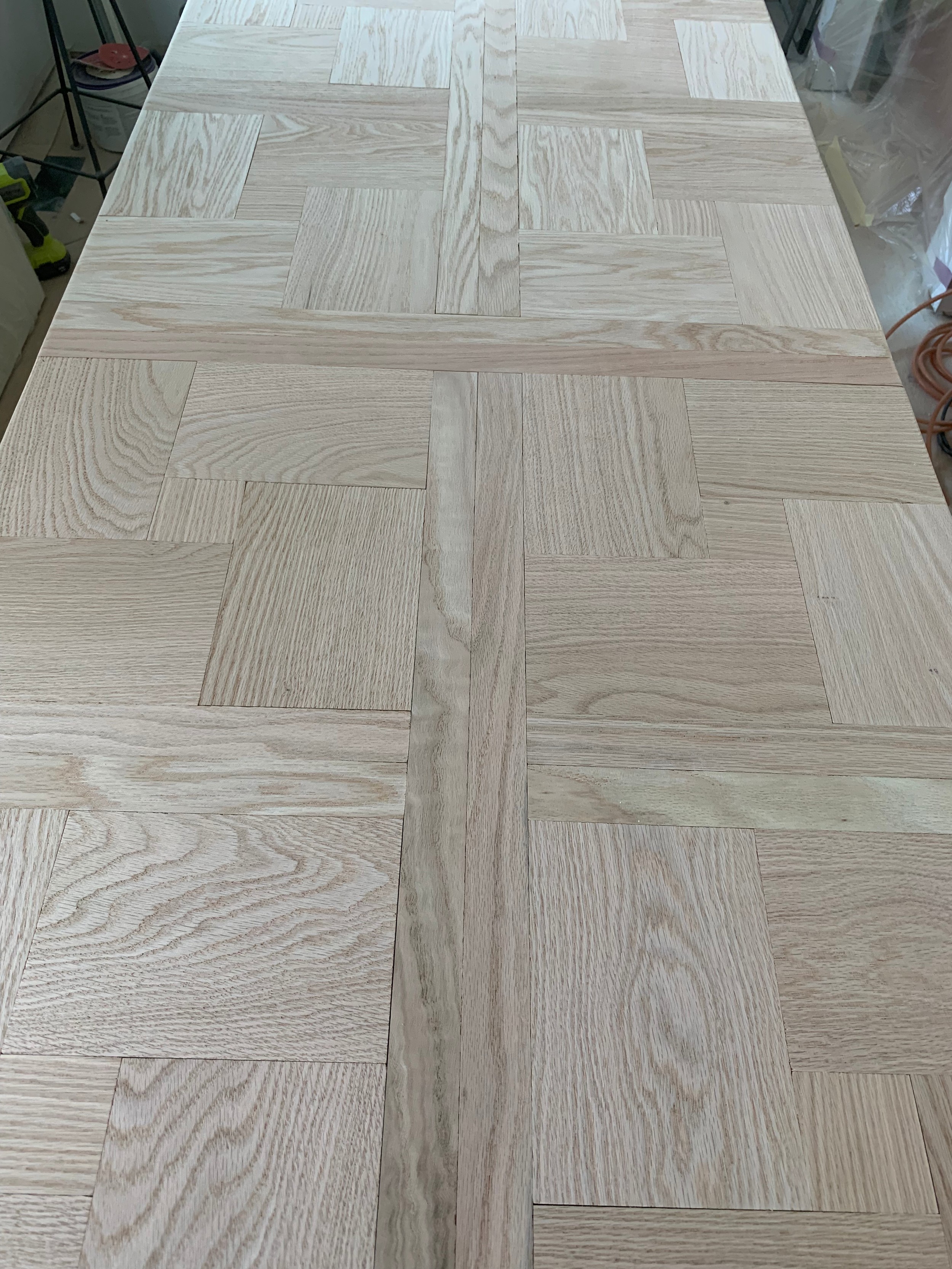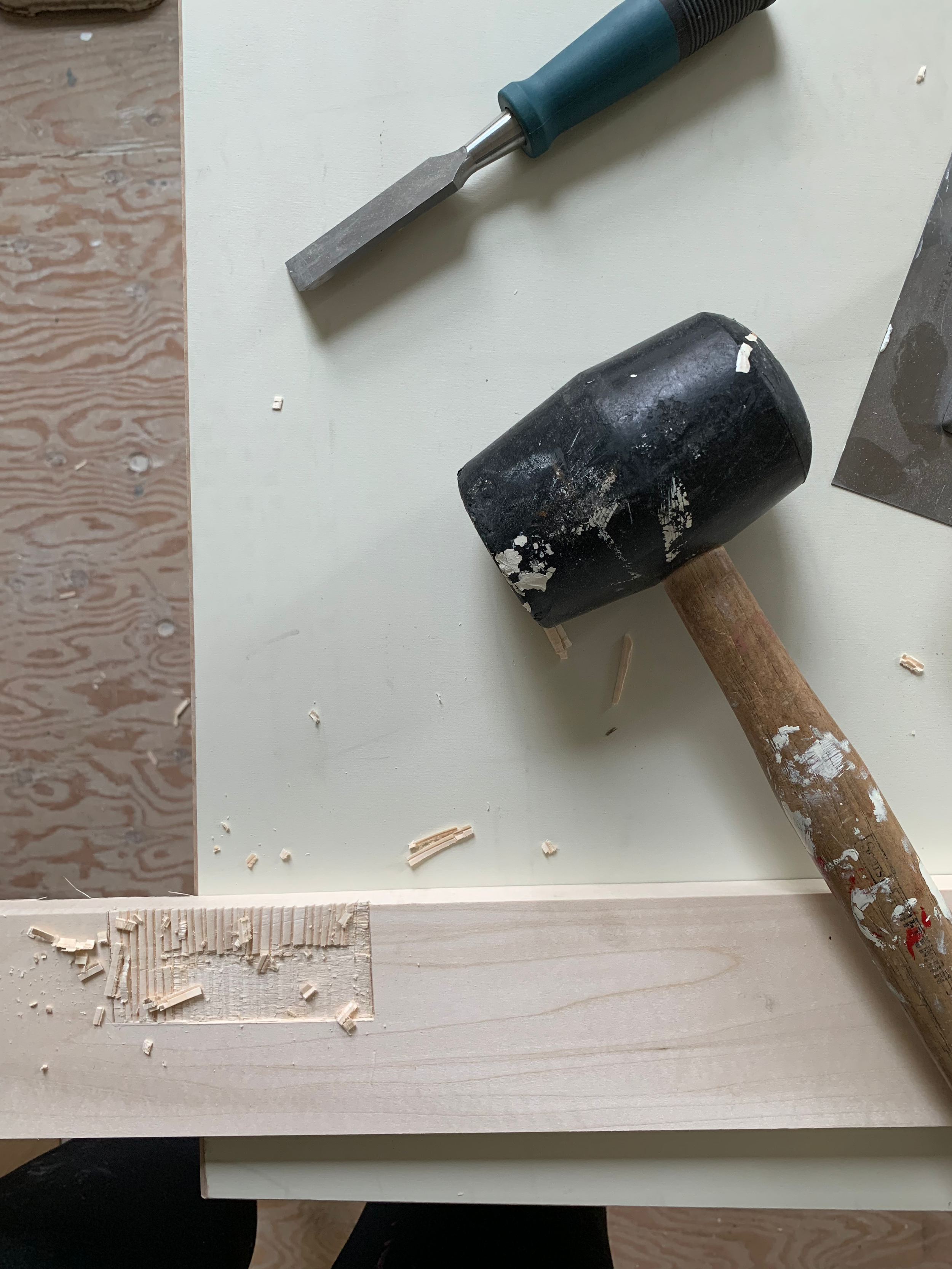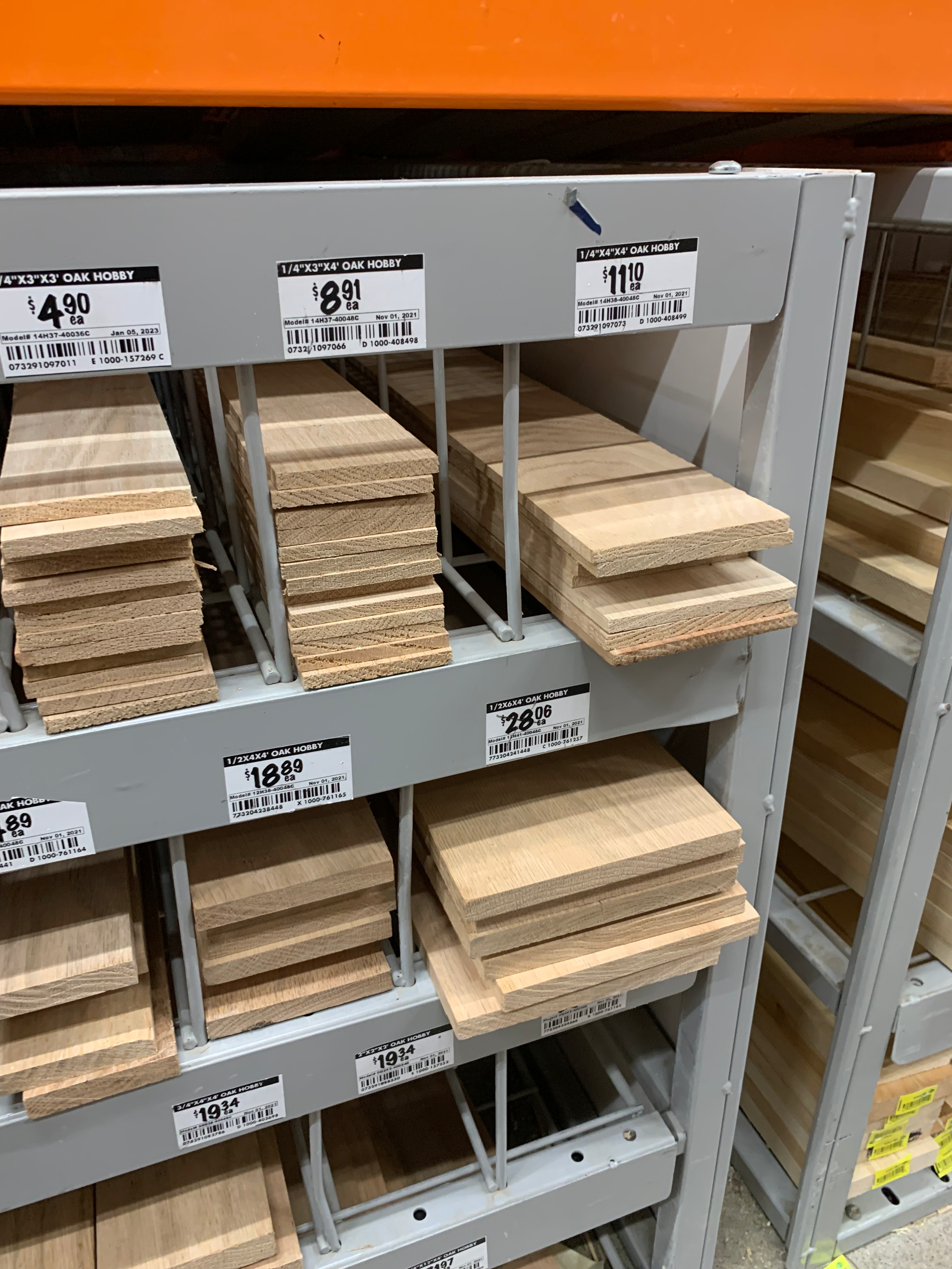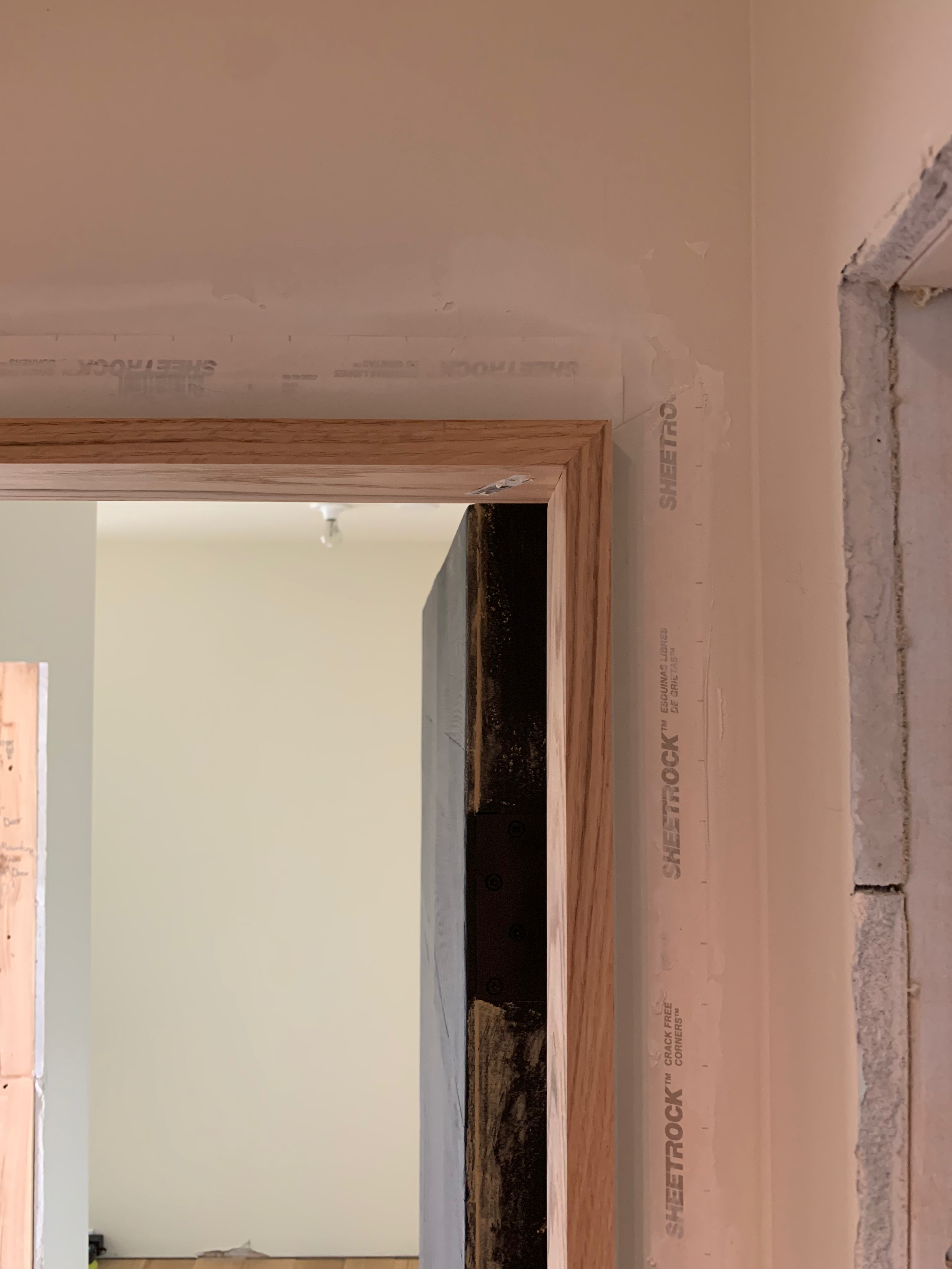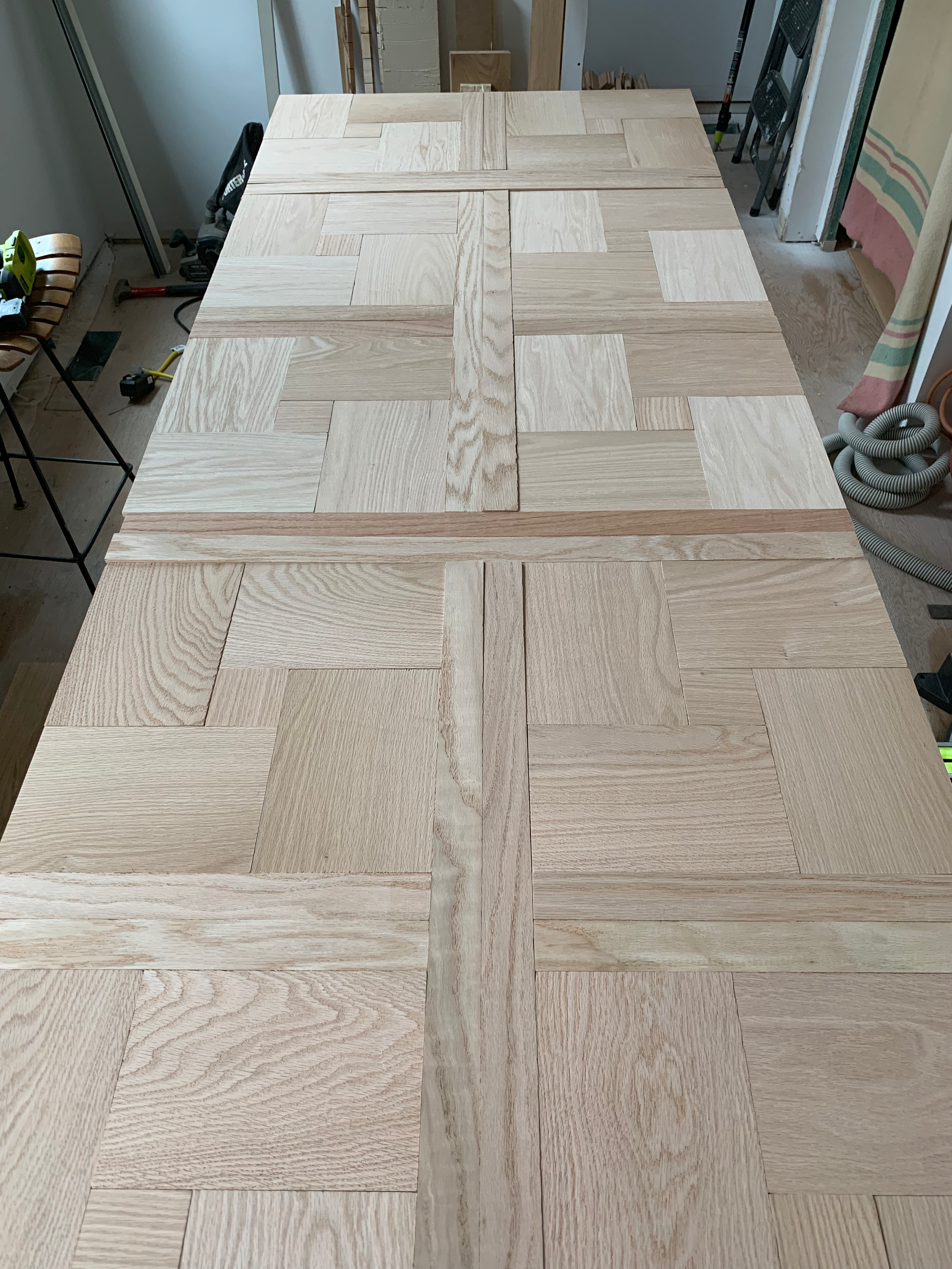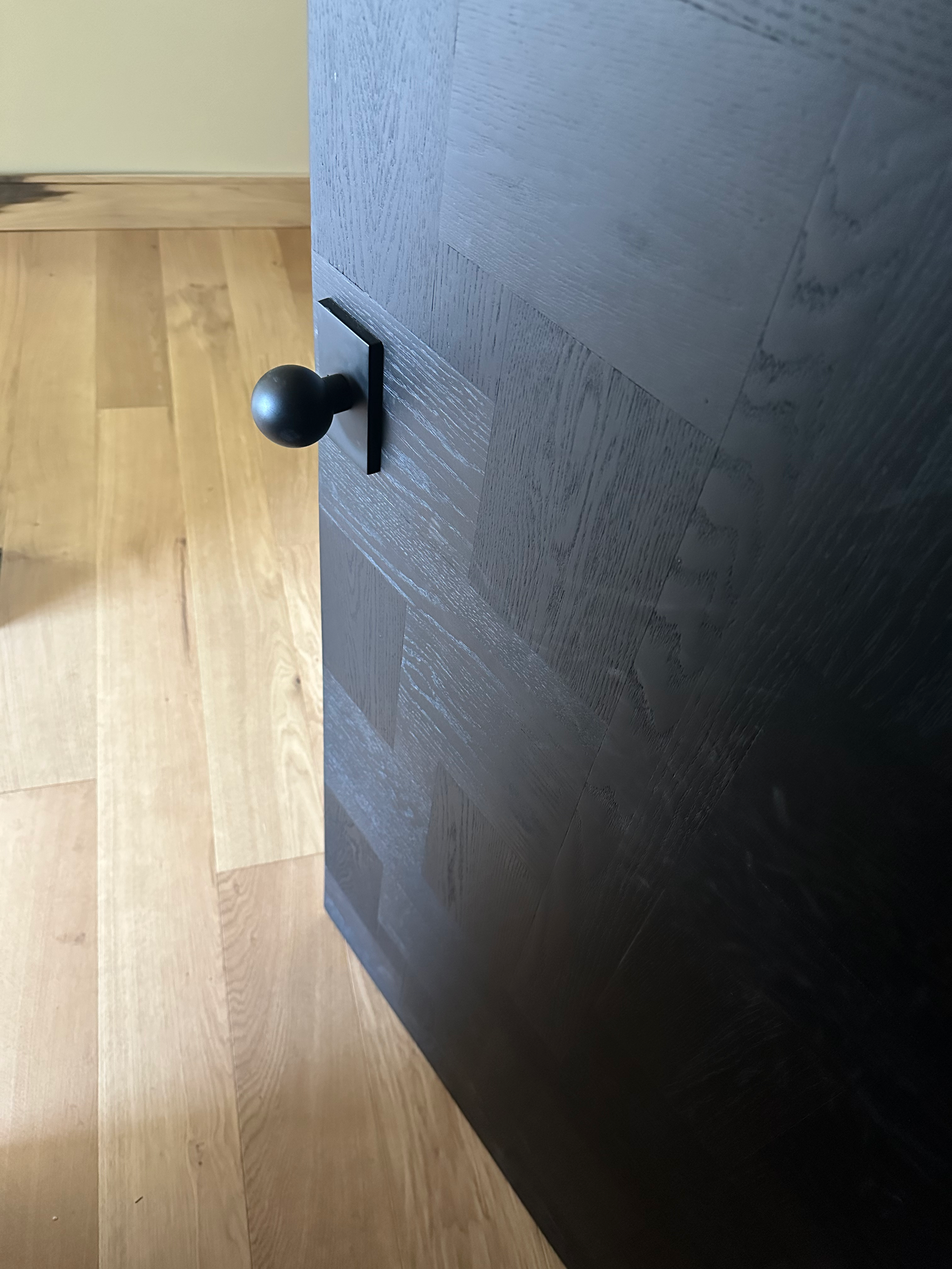Our Home - Part 7
I really don’t want standard stock doors and trim. Much of our work as designers consists of helping clients select the finishes for their new builds: doors and trim, hardware, millwork, flooring, tiles, plumbing, and lighting plans.
I labour over finding an affordable design that fits, but also elevates, the era of the home and the style of the existing furniture. I try to avoid trends, but unfortunately, once something is on-trend it becomes easily available and cheap. It can be really hard to convince someone to spend more after they have already spent so much.
For my own home, I was also not prepared to spend too much more, but I do have some skills, a lot of will, and a very patient family.
I decided to clad flat stock doors with black stained oak for two reasons:
I had made a small tiling mistake when doing the laundry room and the fix was to have extra thick doors.
The original house has those ugly, formally on-trend doors. They are solid, quality doors, but they are awful looking. Throwing them out seems a waste ( there’s about 7 of them ), but I don’t want to match the new doors to them either.
I figured I can solve both problems and get great looking custom doors. I created a pattern that uses cut pieces of 4' long 1/8” oak which comes in various widths. I picked up some solid core flat doors, sanded off the primer, glued and nailed the oak panels, filled the nail holes and spaces, sanded again, stained and sealed. Easy peasy. Now I just have to clad the 7 old doors. LOL.
To hang the doors, I definitely did not do it like the pros. I figured if the door frame was plumb then the door would hang straight, so I chiseled the mortises into the frame and the doors, hung them each separately. Then built the rest of the frame around the hanging door.
Builders often want pre-hung doors, but they come with traditional trim which is not for me. I felt that the pattern on the doors would be overkill with heavy trim. Instead I finished the drywall edges around the door and installed a 3/4” oak frame to the outside of the doorway which also acts as the door stop. The frame protrudes only as far as the baseboard, giving a minimal look to a maximal pattern.
Lastly, I installed the door knobs. Unfortunately because my doors are now so thick, I had to spend a lot more on my door knobs. But they do look great.
So I guess the moral of the story is: if you want something original, you have to spend more money, but if you do it yourself you have to spend a lot more time too.

